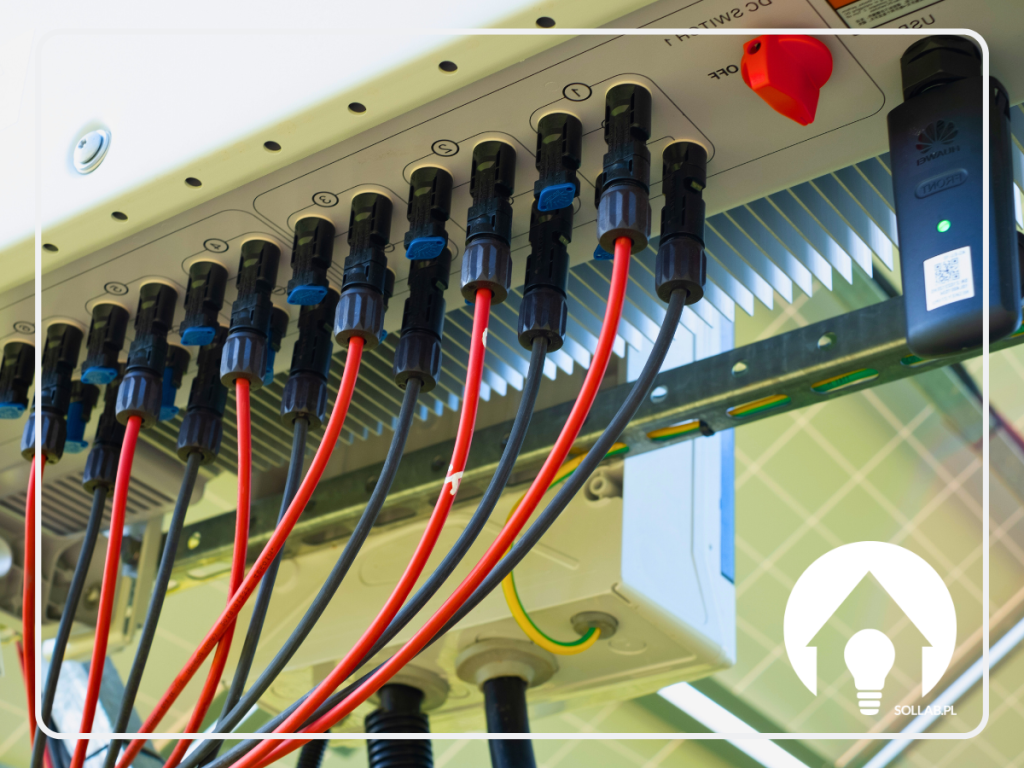How much does it cost to set up photovoltaics?
This is a question that many people interested in investing in renewable energy sources ask themselves. In this article, we take a look at the costs associated with a photovoltaic installation, the cost-effectiveness of such an investment, and funding and subsidy options.
Fundamentals of photovoltaics
Before starting to analyse the costs associated with establishment of photovoltaicsit is useful to understand the basic concepts and principles photovoltaic installation. Photovoltaics is the process of converting solar energy into electricity by means of photovoltaic panels. The panels consist of photovoltaic cells that generate electricity when exposed to sunlight.
Types of photovoltaic panels and their impact on price
Various types of photovoltaic panelswhich differ, among other things, in production technology, performance and price. The most common types are monocrystalline modules made with PERC, TopCon or HJT technology. Price of photovoltaic panels depends on their type, quality and power. Cost of photovoltaic panels accounts for a significant proportion of the cost of the overall installation, so it is worth examining the options available carefully before deciding to invest. Importantly, at the moment, photovoltaic panel prices are at record lows, keeping installation costs low and the cost-effectiveness of photovoltaics at record highs. For example, price per photovoltaic panel of 450 watts can range from £500 to £900, depending on the type and manufacturer. The cost of the solar panels represents approximately 30-40% of the price of the photovoltaic installation.
Photovoltaic installation capacity is the value that determines the amount of energy the system is capable of producing in a given period of time. This power is expressed in kilowatts (kW) and is one of the key factors influencing the cost of the installation. Examples of installation capacities are photovoltaic installation 3 kWp, 5 kWp, 8 kWp or 10kWp.
Choosing the right the power of the photovoltaic system depends on individual energy needs and the available roof area. It is worth noting that the cost of installations of different capacities can vary. For example, power of 4 kWp will be cheaper than 6 kWp powerbut at the same time may not be sufficient to cover the total energy demand. It is therefore important to carefully selecting the output of the photovoltaic system to individual needs.
Detailed overview of photovoltaic installation costs
In this part of the article we take a closer look at the cost of photovoltaic installation, analysing the various aspects influencing investment cost of photovoltaics. Among other things, we will discuss the price per kwp of photovoltaics, the average cost of installation, and the cost of installing photovoltaic panels.
Price per kwp of photovoltaic: how to calculate it?
Price per 1 kwp of photovoltaic is a value that allows the cost of different photovoltaic installations to be compared. To convert the price per kWp, divide the the cost of the entire installation by its power expressed in kilowatts. For example, if the cost of the installation is £20,000 and its power is 5 kW, the price per kwp is £4,000 (£20,000 / 5 kW).
It is worth noting that price per kWp of photovoltaic can vary depending on many factors, such as the type of photovoltaic panels, the manufacturer and the size of the installation. It is therefore worth comparing offers from different suppliers to find the most advantageous option.
Average cost of photovoltaic installation: price analysis in 2023
Average cost of photovoltaic installation depends on a number of factors, such as the power of the installation, the type of panels and the cost of installation. In 2023, the price photovoltaics may vary depending on these factors, but it can be assumed that the average price of a 5 kW photovoltaic installation is approximately PLN 18 000 - 25 000. It is worth noting that average photovoltaic prices may change in the future, for example as a result of changes in the renewable energy market or the introduction of new technologies. It is therefore worth following current price trends in order to make the most cost-effective investment.
Cost of 5 kWp installation vs price of 10 kWp PV: a comparison
Comparing installation cost 5 kw z photovoltaic prices 10 kw, it can be seen that the cost per 1kW decreases as the capacity of the installation increases. For example, a 5 kW installation may cost around 20 000 (approx. PLN 4 000/kW), while a 10 kW installation may cost between PLN 32 000 and PLN 40 000. (or even PLN 3 200/kW). It is very important to carefully analyse your energy needs and available financial resources before deciding on the power of the installation.
Additional costs associated with the photovoltaic installation
Running costs of photovoltaic panels include primarily the costs associated with the maintenance and upkeep of the installation. Aspects such as regular maintenance checks of the installation or possible repairs are worth noting. For most photovoltaic installations, operating costs are relatively low, as solar panels are durable and do not require frequent servicing.
However, it is worth bearing in mind that operating costs may increase in the case of a more powerful installation or if the installation is damaged by external factors such as strong wind or hail. It is therefore advisable to regularly monitor the technical condition of the installation to avoid unforeseen costs.
Purchasing an inverter - what are the costs?
Inverter is the key component of a photovoltaic installation, responsible for converting solar energy into electricity that can be used in the household. Costs associated with the purchase of an inverter depend on many factors, such as the power of the installation, the manufacturer or the type of appliance.
For example, a 5 kW inverter can cost between PLN 3 000 and PLN 5 000. It is worth paying attention to the quality of the equipment and the warranty offered by the manufacturer, as this can affect the life and efficiency of the photovoltaic installation.
Cost-effectiveness of investing in photovoltaics
Profitability factors for photovoltaic installation include, but are not limited to:
- the cost of purchasing and installing photovoltaic panels,
- the possibility of obtaining subsidies or tax relief,
- location and sunshine,
- household electricity consumption,
- price of electricity.
It is worth noting that photovoltaic panels cost-effective are when the investment costs are offset by savings on electricity bills. The higher the energy consumption of the home, the faster solar panels will pay off.
Save with solar panels you can save a lot, especially when you consider the rising price of electricity. The savings associated with a photovoltaic installation depend on a number of factors, such as the energy consumption of the home, the price of energy and the efficiency of the panels.
For example, if we save £2,500 a year through solar panels and the installation runs for 25 years, the total savings will be £62,500. In this case, money recovered from a photovoltaic installation can be significantly more than the investment cost, making photovoltaics a viable solution for many households.
Funding and subsidies for photovoltaics
Support for the purchase of solar panels can take various forms, such as:
- government programmes, e.g. 'My Electricity',
- tax relief,
- preferential bank loans.
Analysing the benefits of these forms of support allows the best solution to be chosen for a particular case. Subsidies can significantly reduce the cost of investment, resulting in a quicker return on investment and greater savings on electricity bills.
Tax relief for owners of photovoltaic installations
Tax benefits are another way to reduce the cost of investing in photovoltaics. The owner of a photovoltaic installation can benefit from discounts such as:
- deduction from income tax of part of the cost of purchasing and installing solar panels,
- exemption from property tax for a photovoltaic installation on the roof of a building.
By taking advantage of these rebates, the owner of a photovoltaic installation can significantly reduce the cost of the investment, resulting in a faster return on investment and greater savings on electricity bills.
'My electricity' programme: How to benefit and how much can you save?
My Current' programme is a government support programme for individuals who wish to install photovoltaic panels on their property. The scheme offers a subsidy of up to 50% of the investment cost, but no more than £6,000. To benefit from the scheme, certain conditions must be met, such as:
- install photovoltaic panels of no more than 10 kWp,
- report the installation to the network operator,
- submit an application for funding in due time.
The potential savings associated with the 'My Electricity' scheme depend on a number of factors, such as the cost of the installation, the size of the grant and the energy consumption of the home. For example, if the cost of the installation is £25,000 and the subsidy from 'My Electricity' is £6,000, the cost of the investment drops to £19,000. In this case, the return on investment will be quicker and the savings on electricity bills will be greater.
Summary
In this article, we have provided a comprehensive guide to the pricing and cost-effectiveness of a photovoltaic installation. We have discussed the basics of photovoltaics, types of panels, installation power and a detailed overview of the costs associated with the investment. We have also outlined the additional running costs, the purchase of an inverter and inverter, and insurance for the installation.
To summarise, investment in photovoltaics can be both economically and environmentally viable. However, a thorough understanding of costs, cost-effectiveness and financing options is key in order to best tailor the investment to individual needs and opportunities.
















